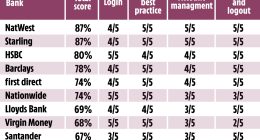
Opinions expressed by Entrepreneur contributors are their own.
In 2021, pandemic-related challenges transformed remote work into the new standard, forcing many employers and employees to adapt. Today, Covid-19’s impact on the professional world continues to linger, and it’s clear that the remote-workforce model is here to stay. In fact, according to a recent Gartner survey, 44% of companies have pushed back or altered their reopening plans because of the Omicron variant.
But in addition to introducing significant changes to the workplace, the pandemic reinforced the importance of alignment within an organization. If 2021 was the year to embrace remote working, 2022 is the year to embrace alignment. From integrating internal departments to unifying customer touch points and engagement, it is critical for businesses to take this year to focus on this missing piece of the puzzle.
Here are some tips to tackle alignment in 2022.
Unify as a team
Regardless of where you are in the sales process or what your role is, unifying as a team is the only way to ensure a superior customer experience. It has never been easier to start your own company, and with so many choices, customers can easily switch to another provider if they’re unhappy. Sales is a team sport; therefore, it’s the responsibility of all departments to ensure customers are provided with personalized, relevant content.
Employees are ambassadors — especially when they are posting to social media. Provide them with relevant content so they can make an impression on both customers and prospects. Empower your teams with information and insight so they can assist in the customer journey. This includes using tools that share data so that every team member can see real-time data on prospects, customers, service and more.
Related: 17 Inspirational Quotes to Instantly Foster Teamwork When Unity Is Lost
Be human
The relationship between brands and customers, both B2B and B2C, has forever changed, and as a result, the way businesses interact must pivot to keep up. Customers want relationships that are more meaningful, and they want to know the personality behind the brand. Trade shows and live events were typically the places where brand personality would shine, but Covid-19 has reduced or eliminated them for the short term. Is your brand fun, approachable or clever? Think about ways these adjectives can come across digitally. One low-cost, low-risk channel is your organic social-media presence. For example, show what’s going on “behind the scenes” with employee profiles and online company events. Are you having virtual yoga? Take a screenshot and post it on social media.
The business-customer interaction must feel human, not transactional, especially in a time where face-to-face interaction continues to diminish. Ditch the jargon and speak like you are having a conversation with a person. This is where hyper-personalized customer journeys can make prospects and customers feel like you are anticipating their needs.
Re-evaluate your tech stack
Do your tools support the new reality of a remote workforce (whether full or partial) and dispersed teams? Businesses must ensure they are well poised to accommodate this challenge, and it starts with a centralized approach. For example, do you need a CRM to ensure that sales, marketing, project management and other customer services are aligned? Implementing a CRM platform is also a great way to give all stakeholders a complete view of interactions across the entire buying experience — regardless of their location.
Some companies were (understandably) reluctant to spend during the pandemic and may be unknowingly using antiquated tools. Innovations, especially in MarTech and CX, have proliferated in the interim, so it may be time to reevaluate your tech stack. Does your cloud suite really work together, or is the customer journey more disjointed due to multiple tools? Now is the time to look for new tools or ask your teams if they see a gap. Consider assigning a person or team to ensure you aren’t missing a killer app or technology that your competitors have embraced.
Related: How to Choose a Tech Stack for Your Startup
Foster employee engagement
The Great Resignation is a huge concern for nearly every business right now. With a virtual workplace as the new norm, companies need to differentiate themselves to keep and attract the best talent. While it may appear to be an HR issue, it’s real impact is on the customer experience. Virtual events are great, but can you meet in person this year? If it’s possible, make it happen. If you went remote during Covid-19, realize and resolve the fact that some teammates have never met in person. Group lunches, meditation sessions and happy hours over Zoom were a knee-jerk reaction that may have served you well. Is it time to refine these events?
A great starting point is to support employees from an emotional standpoint through a consistent drumbeat of communication. Consider weekly CEO messages, bi-weekly town halls, employee newsletters, Slack channels, etc. Pick a few and stick to them so that they become part of your corporate culture.
Related: 5 Ways Employee Engagement Makes Your Company More Competitive
While no one can control what lies ahead, businesses can control their approach to managing internal and external operations — namely, aligning to deliver an authentic and consistent approach that will help businesses thrive in the year ahead and beyond.
This article is from Entrepreneur.com









